It is fair to say that Evel Knievel is one of the most recognizable names in daredevil history. While there have been many before and after him, he set the bar for showmanship. With over 75 ramp-to-ramp jumps to his fame, he spent the bulk of his life creating the legend that many of us grew up seeing. Always the showman, his days were filled with highs and lows that most of us will never experience. He wrapped up his philosophy on life when he said, “A man can fall many times in life, but he’s never a failure until he refuses to get back up.”
We want to thank the Evel Knievel Museum for hosting our visit. Rest assured that all opinions are our own.
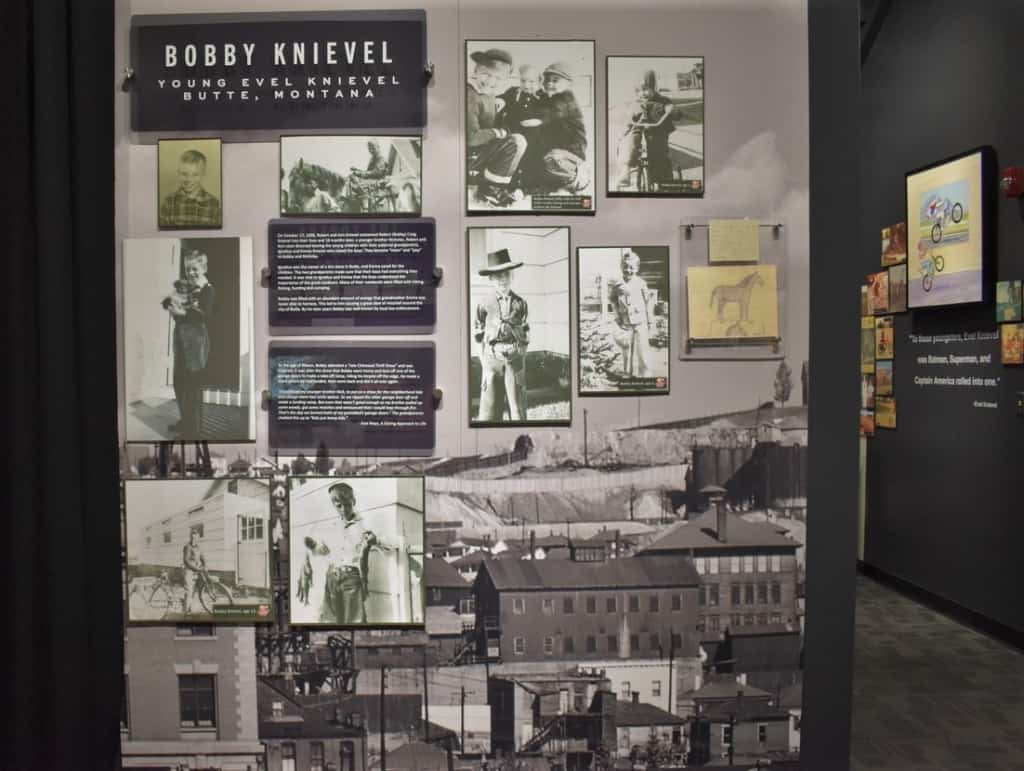
Life in Butte
Robert Craig Knievel started life in Butte, Montana. The oldest of two boys, Bobby’s parents left their children to be raised by their paternal grandparents. It was at the early age of eight that Bobby witnessed his first daredevil show. It was shortly after World War II ended that the Joie Chitwood Thrill Show came to town. Chitwood had assembled five units of drivers that toured the nation putting on performances. The highlight of the shows was the ramp-to-ramp jumps. Later in life, Knievel would credit this show as being his inspiration into the world of daredevils.
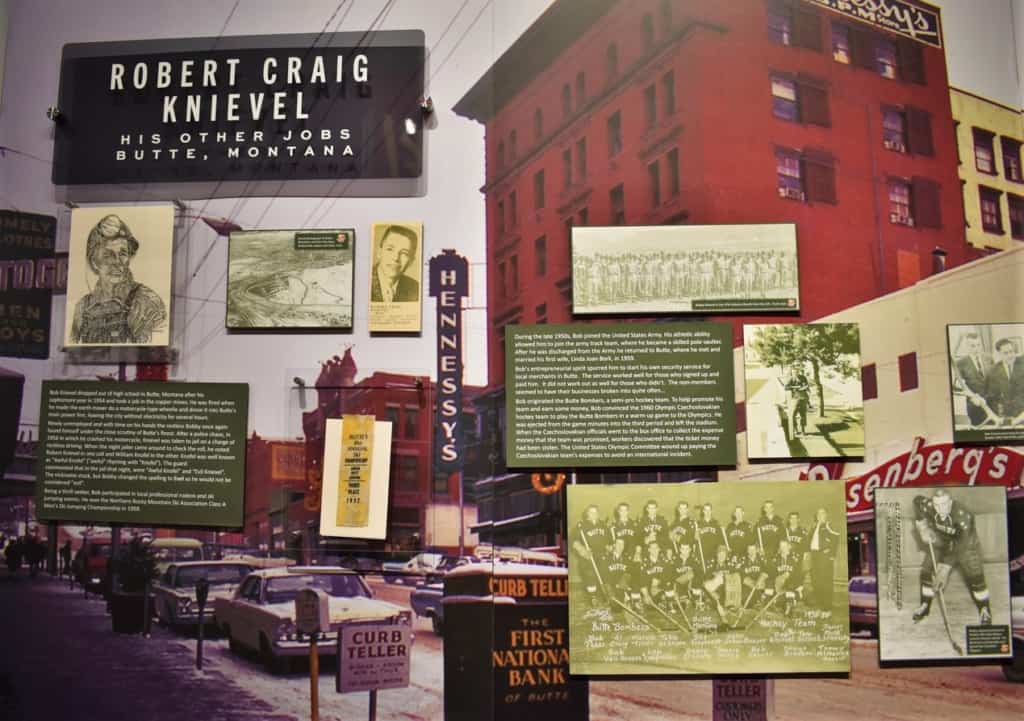
Early Careers
Knievel dropped out of school after his sophomore year and started work in the copper mines. He would lose this job when he performed a wheelie with an earth-mover and took out the town’s main power line. In search of more thrills, Bobby participated in ski jumping and rodeo events. By the late 1950s, he would join the US Army. When he returned to Butte, he met his first wife and started a semi-pro hockey team. Always the showman, he continued to look for thrills on the motocross circuit. A fellow motocross rider taught Knievel how to stand on the seat of a bike while doing a wheelie.
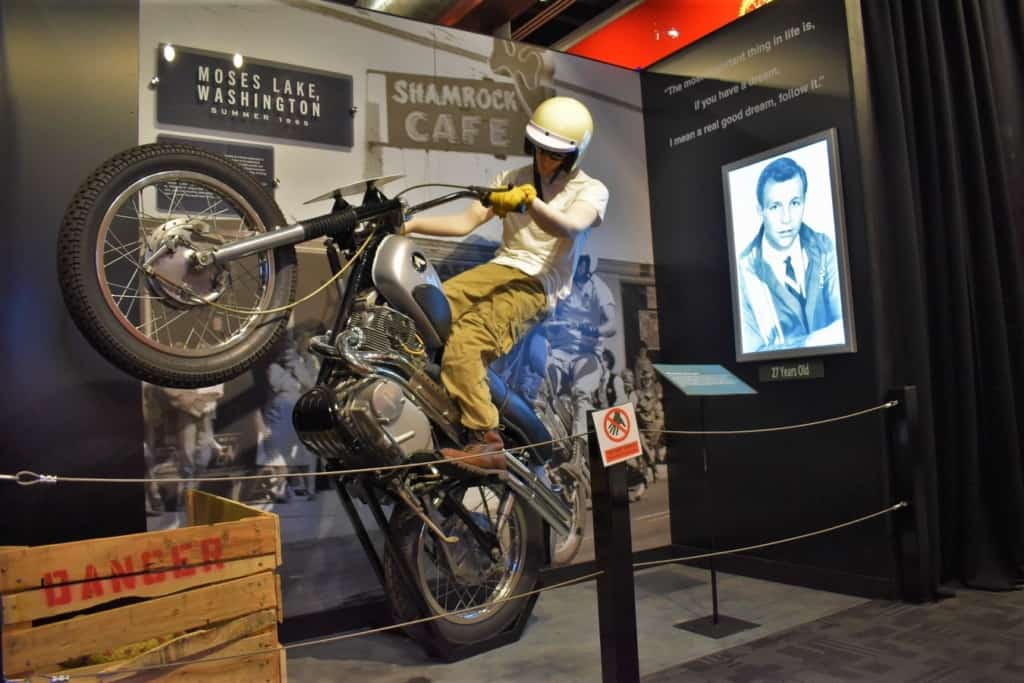
Getting a Taste
With the memory of that early daredevil show still in his mind, Bobby Knievel was ready to strike out on his own. The thrill of ramp-to-ramp jumps appeared to be the perfect avenue to greatness, but he would do it on two wheels. He devised a plan for a show that would set him on his way. To accomplish it, he had to perform the roles of promoter, ticket sales, coordinator, and even master of ceremonies. After performing a few wheelies for the small crowd, he proceeded to jump a 20-foot box filled with rattlesnakes and two mountain lions.
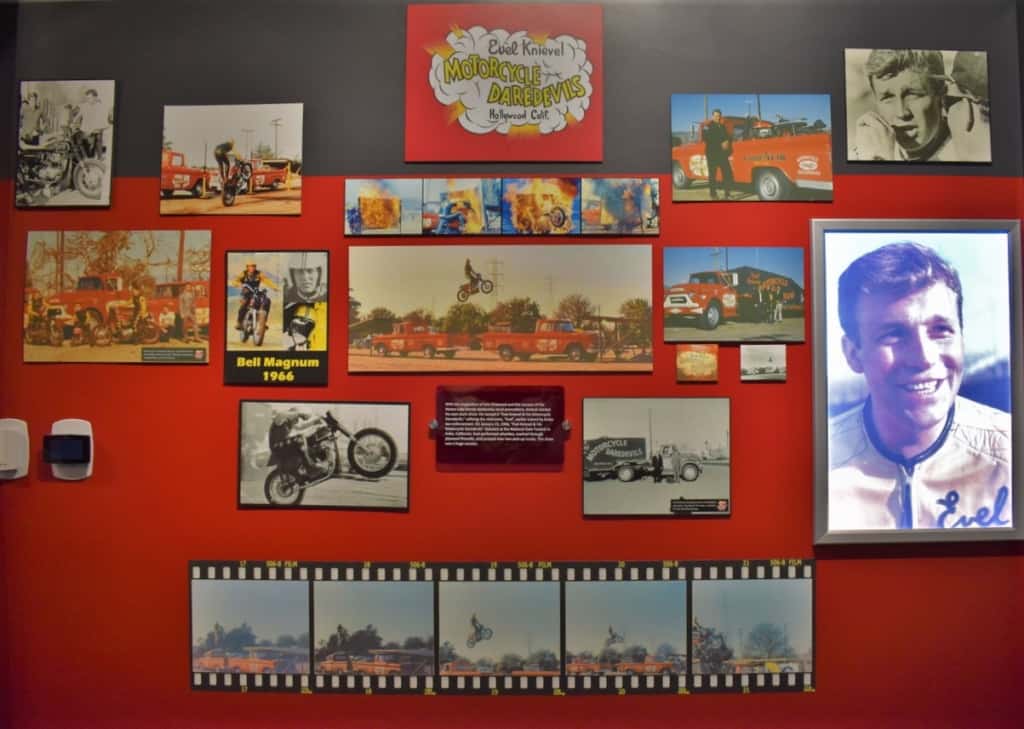
Creating a Legend
After getting this taste of fame, he never looked back. Realizing that he needed to concentrate on the stunts, he went searching for a sponsor. Bob Blair was a west coast motorcycle distributor, who saw the potential in Bobby Knievel. He offered to provide motorcycles and backing but wanted to see a name change to the show. He suggested Evil Knievel, but Bobby was afraid that would elicit an image of the Hell’s Angels type of motorcyclist. It was decided to name the show Evel Knievel and His Motorcycle Daredevils. After suffering a serious injury, during a show in Barstow, Knievel’s daredevil show disbanded. Now he was clear to strike out on his own. His return to jumping brought increased attention. To set himself apart from other motorcycle daredevils, Knievel decided to focus on jumping over automobiles.
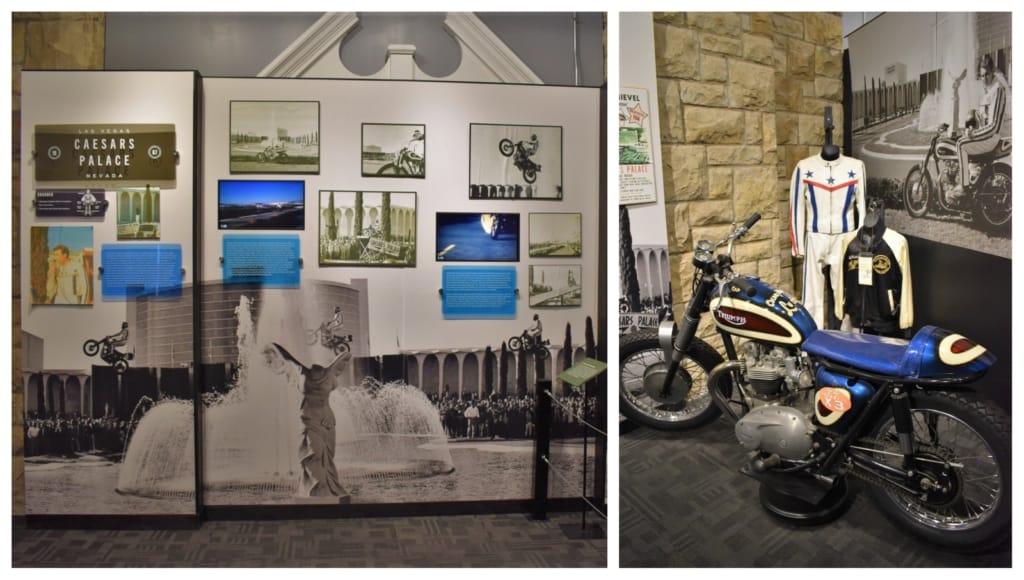
The Crash Seen Round the World
Always the showman, each performance seemed to have him adding one more vehicle to the growing line. While injuries would temporarily sideline him, he found that they also added to his name recognition. During a visit to Las Vegas, Evel saw the fountains at Caesars Palace and knew he had to jump them. He formed a fictitious corporation to lend credence to his appeal to the casino for permission. It was decided the jump would take place on December 31, 1967. Evel contacted Wide World of Sports to gain coverage, but they would only be interested in video footage, “if the jump were spectacular.” This jump has become the story of what can go wrong, but the footage yielded Evel more money than he had asked for originally.
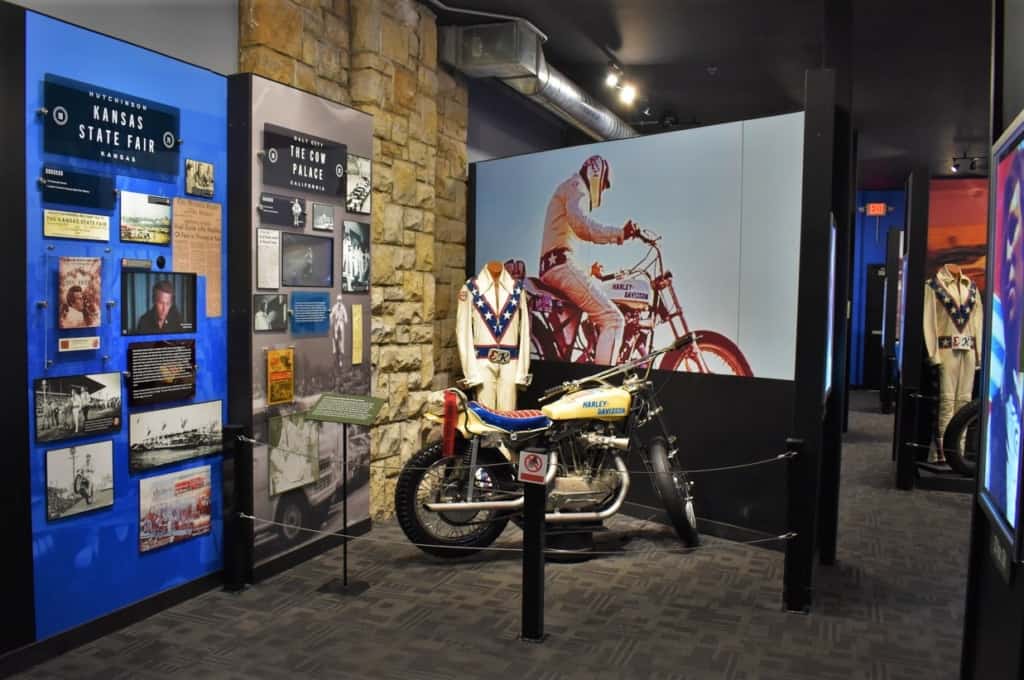
Always the Showman
After recovering from the Caesars jump, Evel would walk with the aid of his signature cane. Wanting to keep his name in the forefront, Evel proposed a jump over the Grand Canyon. It would take the better part of three years before he realized the government would never allow this stunt. In the meantime, Evel had returned to jumping cars and was raking in around $25,000 per performance. He had also bumped up his schedule to the point that he was jumping nearly every week.
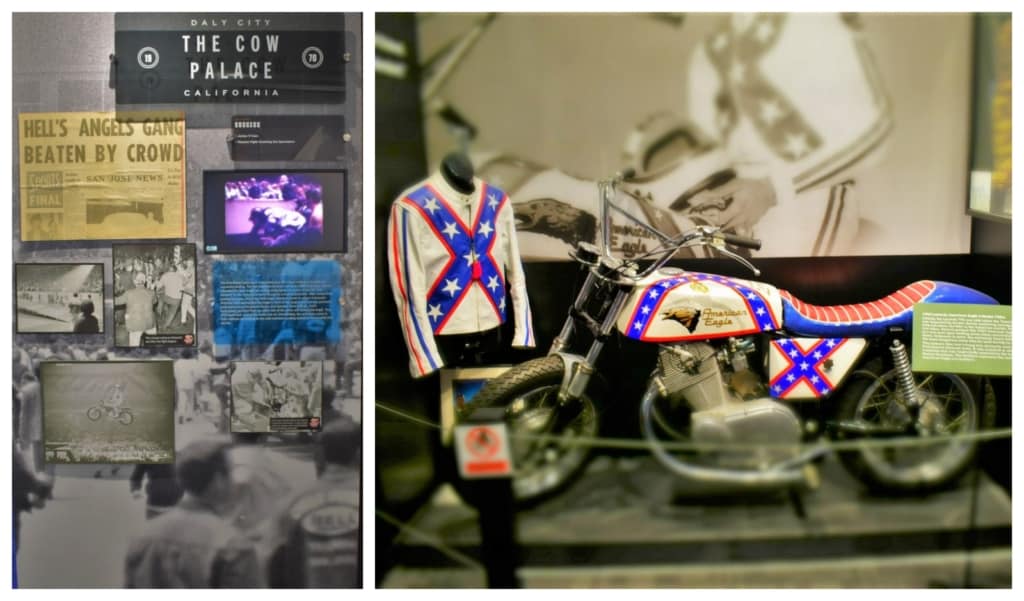
Danger Off of the Ramps
While most of his jumps were successful, Knievel still experienced the infrequent crash. Over time, the growing number of injuries took its toll. Not all of these happened on the back of a motorcycle. During the late 1960s, Evel had spoken out against the “bad element’ in motorcycling, which most took to mean the Hell’s Angels. A jump performed at the Cow Palace, near San Francisco, drew a number of this bike gang’s members. One of the gang threw something at Knievel’s motorcycle and Evel returned to confront them. When the gang piled on the stuntman, a large section of the crowd joined in to rescue their American hero. Several of the gang members would end up being sent to the hospital.
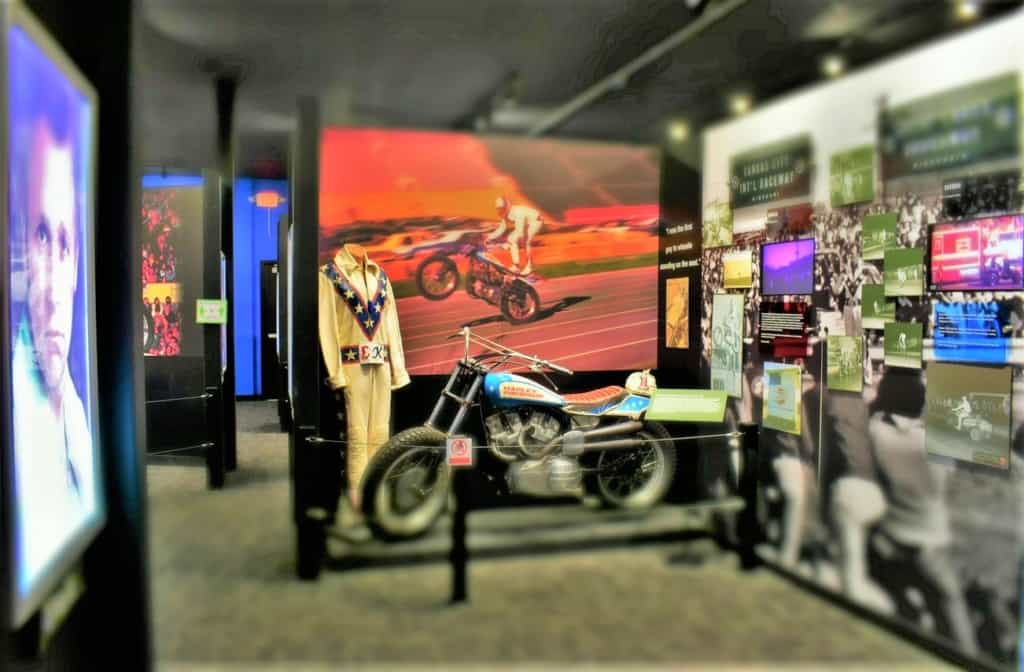
Touring the World
His setbacks would not prevent him from moving forward. Injuries were keeping him out of the spotlight that he eagerly desired. Always the showman, Evel Knievel would eventually rack up over twenty crashes. He would tally up a record-high 433 broken bones by the end of 1975, and he was still five years away from retirement. He suffered multiple concussions and broke 35 different bones throughout his career. It is easy to understand why he was nicknamed “The Last Gladiator”.
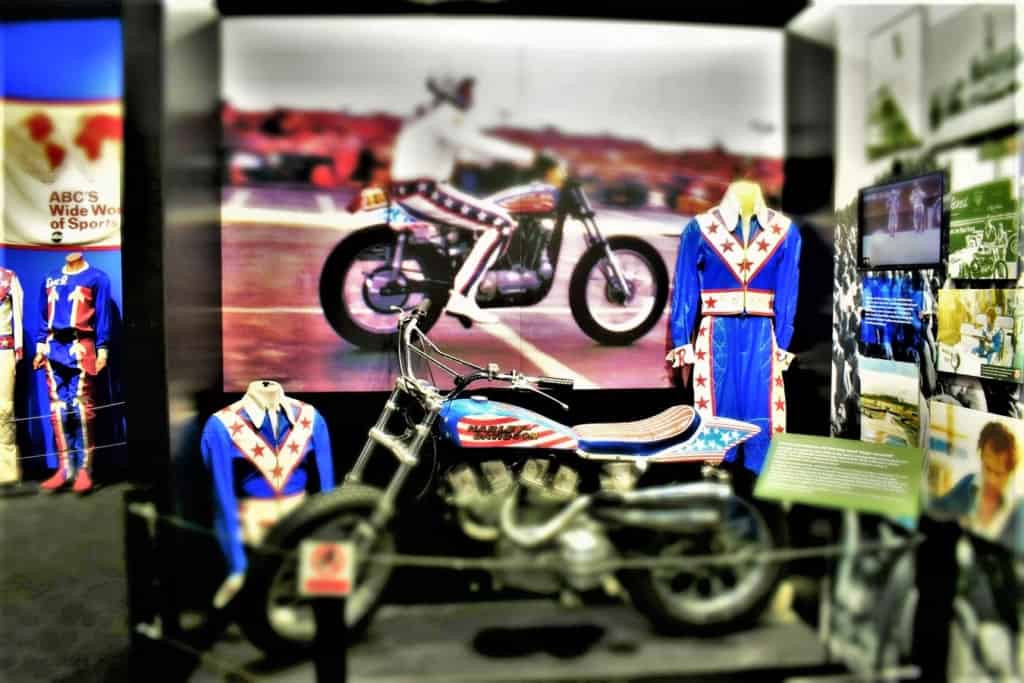
American Icon
Through all of his victories and defeats, Evel Knievel maintained his core values. He had a firm belief that if he gave his word, then he must live up to it. It didn’t matter if he felt that the stunt had a high probability of failure. To him, it was all about keeping his word. This was never more apparent than when he pursued his attempt to jump the Snake River Canyon. Even though he was having huge success on the jumping circuit, it was the idea of tackling a canyon that gnawed at him.
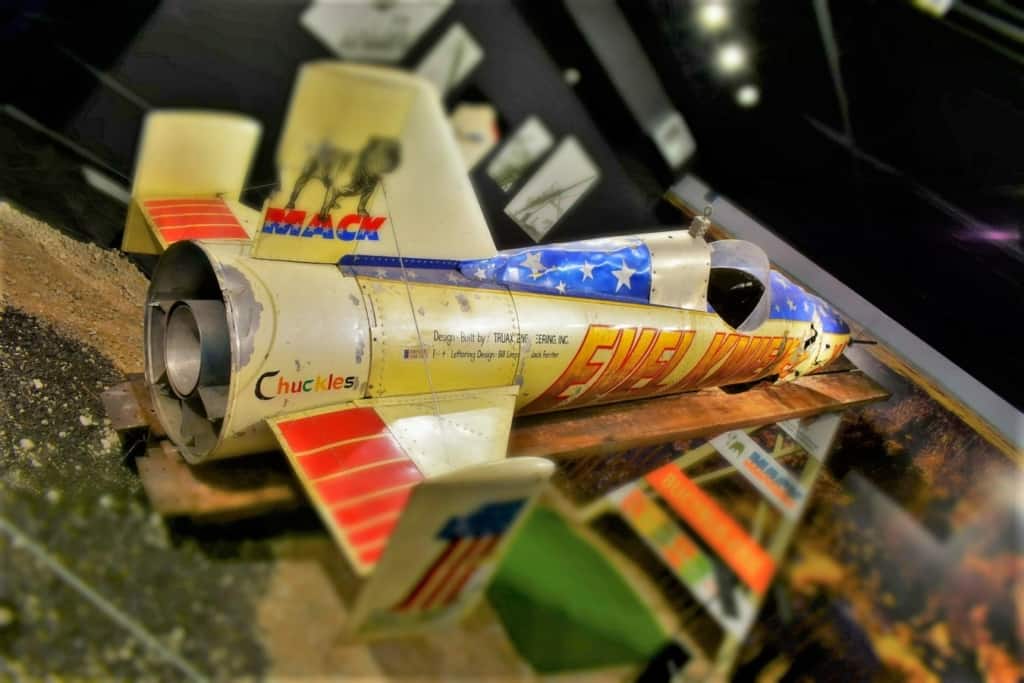
Not Your Average Bike
As part of the jump team’s preparations, they designed a steam-engine powered bike. After a test launch, it was decided the second version would be changed to a rocket-style vehicle. On September 8, 1974, Evel Knievel took to the sky, as the sky-rocket soared from its launch ramp. A drag parachute deployed prematurely, and he drifted down into the canyon. Ironically, Evel had made it to the opposite rim, before the wind pushed him back to the other side.
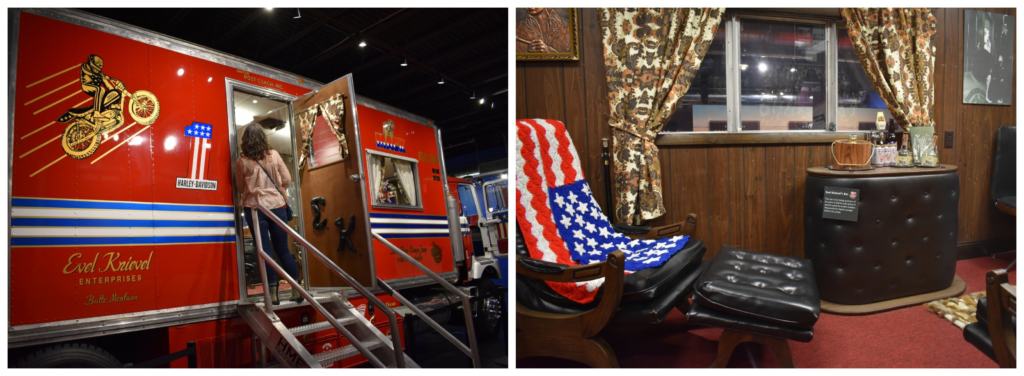
Traveling in Style
Making our way past the impressive timeline of Evel’s performances, we found ourselves outside of the rig used to move his equipment. We were able to peek inside and see how Knievel traveled from city to city. Always the showman, his iconic red, white, and blue were prevalent on the inside, as well as the exterior. After his failure at Snake canyon, he returned to ramp-to-ramp jumps. We remember watching many of these on Wide World of Sports. In fact, 7 of the 10 highest-rated episodes of that show were performances by Bobby Knievel.
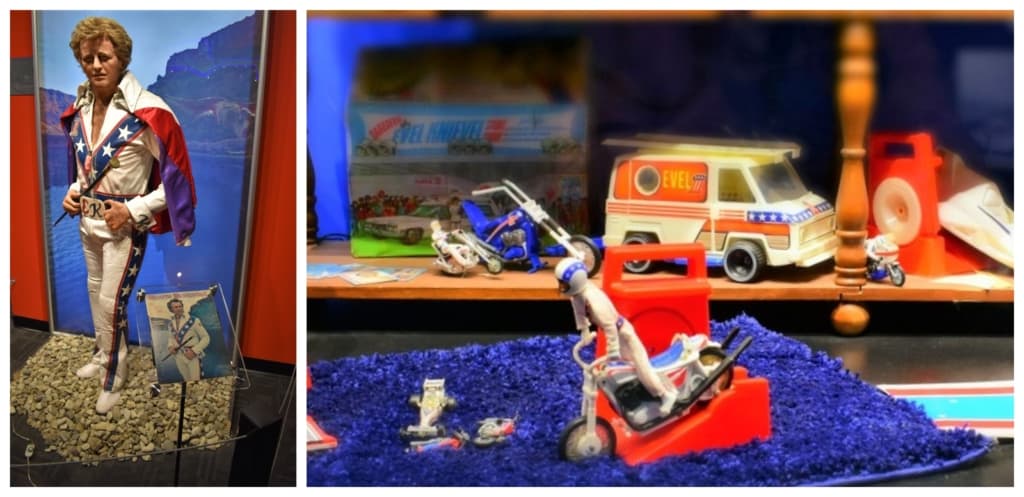
He’s Everywhere
If you are like us, you probably remember the marketplace being flooded with Evel Knievel collectibles and merchandise. I spent many hours winding up my stunt cycle in preparation for a death-defying jump. As we examined the cases of artifacts, we were surprised at just how thoroughly this daredevil saturated the marketplace. How many of you had an Evel Knievel toy?
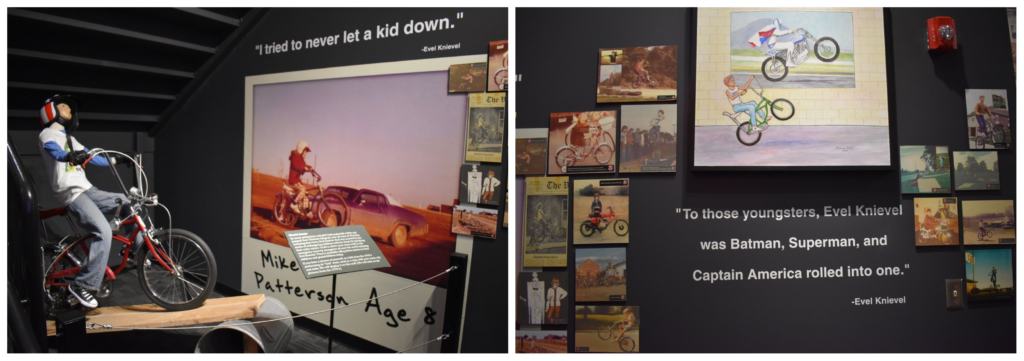
A Different Kind of Hero
Exploring the life of this American showman, we are sure that the stunts he saw as a child remained with him through life. Many of the things that he did reflect a child-like demeanor. Growing up in the Evel Knievel era meant backyard stunts and long conversations about his most recent exploits. Evel was adamant about the use of helmets and encouraged his fans to do likewise. He even supported the mandatory helmet law in California.

An Unfortunate End
After a run-in with the law, Evel Knievel lost the bulk of his sponsorship deals. With no revenue coming in from jumping, he soon found himself bankrupt. Even with these financial difficulties, Evel still performed public service. His last public motorcycle ride was a benefit to aid victims of Hurricane Katrina. In later life, Evel suffered from a series of medical issues. Bobby Knievel passed away on November 30, 2007, at the age of 69. While it has been years since he had performed, the world still remembers this amazing showman.


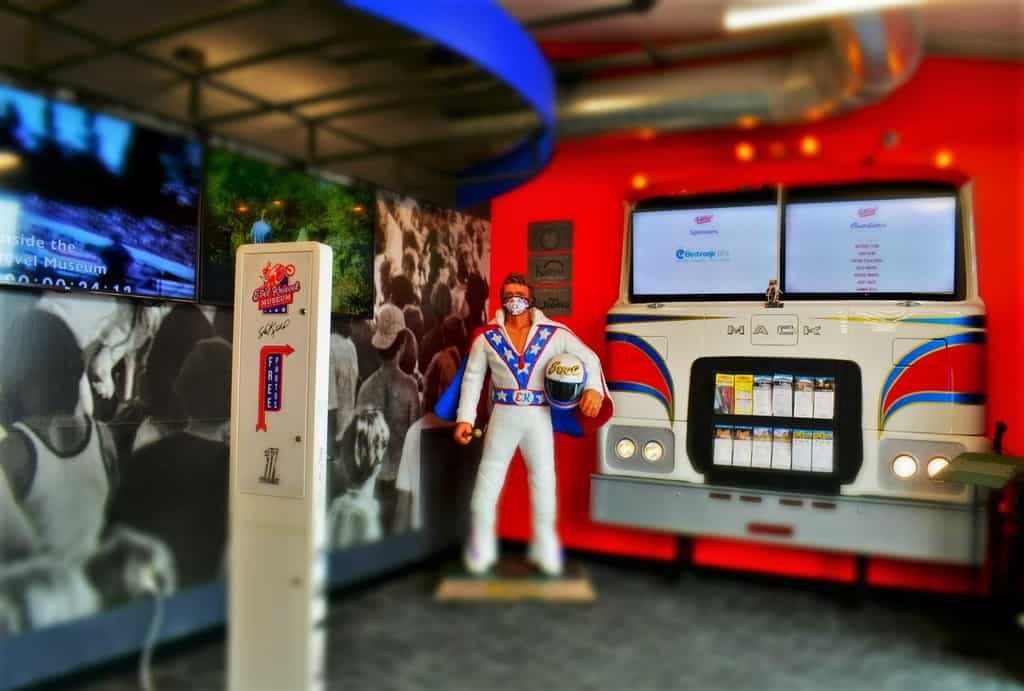


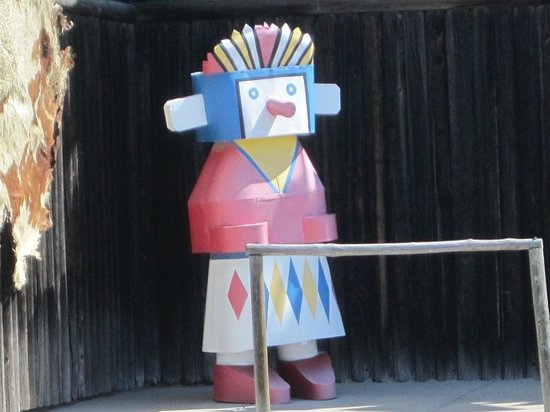
What a strange but cool museum to explore all about Evil Knievel – such a colorful life along with those crazy outfits. Must have been a lot of fun to explore and check out all the memorabilia.
It as a walk through our youths. So many easily recognizable artifacts, as well as a number of items new for us.
I sure do remember hearing about Evel Knievel and his stunts. I was surprised that this museum is in Kansas. I knew about the Butte connection after visiting there several years ago where we had lunch in a tavern where it is said Evel’s son is known to stop in.
We thought it was a little odd, as well. Still, we are glad it is so close to us.
His museum is in Topeka, Kansas! I am surprised his body lasted til he was 69, considering all the injuries it suffered.
That is exactly what we thought. It shows just how resilient the human body really can be.
I remember Evel Knievel. Can’t say I would have ever considered visiting a museum dedicated to him, but this is really interesting. It’s fascinating to learn about the person behind the celerity — often, as is the case here, there’s more to the story than one would guess. Sounds like a worthwhile museum — and I like that it is in Kansas. I would have guessed it would be in Las Vegas!
It certainly was a pleasant surprise for us, as well. We like that it is so close to our hometown, so it makes a spot we can day trip when we feel like it.
He brought to life the phrase, ‘everyone marches (or jumps!) to a different drummer’! He was certainly a ‘name’ in his day.
He did set the standard for daredevils for years to come.
It’s the first time I’ve heard of Evel Knievel but he was a hero, so determined to take those jumps. His body sustained far too many injuries. Thanks for the insight.
He definitely tested the limits of human endurance.
🙋♂️I’ve been a fan since I got his motorcycle and ramp as a kid. I didn’t know there was a museum in Butte. We were just there last month!
This museum is actually in Topeka, Kansas. It is well worth the time to visit, especially for fans.